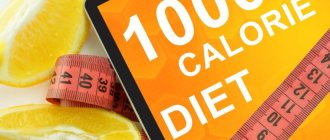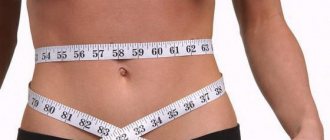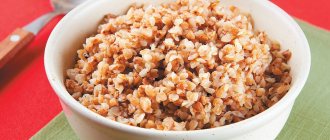Losing weight at home: healthy protein and foods with a low glycemic index
A diet in which you can quickly lose weight, without creating a special menu for every day and eating as usual most of the time - sounds tempting? This is exactly how the 5:2 Fast Diet works - only two days a week need to be fasting days. What can you eat for 500 or 600 calories? What will your day look like on a diet? Should the menu include proteins or carbohydrates on fasting days? And why is it important to consider the glycemic index of foods?
500 calorie diet for weight loss: harmful to health
Lack of nutrition
Following a 500 calorie diet for a long time leads to nutritional deficiencies. A study published in Nutrition Journal found that a very low-calorie diet formula can lead to micronutrient deficiencies.
Significant decreases in serum concentrations of vitamin D, vitamin C, and zinc were observed in obese individuals on a low-calorie diet for more than 12 weeks.
How much is it - 500/600 kcal?
Reducing your calorie intake to a quarter of your normal amount is quite significant, so don't be surprised if your first fasting day hits you hard. If you limit yourself to 500 (for women) or 600 (for men) kcal, it's not like a picnic. It's not even half a picnic. A large latte at a café can be up to 300 calories, and even more if you add cream, while your regular lunch sandwich will more than cover the allowed amount in one large bite. So be smart—spend your calories wisely.
500 Calorie Diet for Weight Loss: Foods You Should Eat
- Non-starchy vegetables such as broccoli, carrots, beets, shallots, cabbage, lettuce and parsnips. They are low in calories and full of nutrients. They will make you lose weight without putting your health at risk.
- Salads, fried, deep-fried and blanched foods. They minimize the destruction of valuable enzymes and phytonutrients.
- Whole milk and yogurt. Full-fat versions are more nutritious and will help keep hunger at bay.
- Fruits and freshly squeezed fruit juices. Make sure you do not consume high GI foods such as mango, pineapple and grapes.
- Low-calorie salad dressings such as olive oil, lime juice, salt and pepper.
- Pre-cooked chicken and shrimp.
- Pre-washed vegetables.
Here is a list of foods you should avoid while on a 500 calorie diet.
When to eat on a fasting day?
Is there an optimal plan? Michael, one of the authors of this book, tried several different diet regimens. The most acceptable option for him turned out to be to arrange two non-consecutive fasting days a week, allowing himself 600 kcal, divided into two meals - breakfast and dinner. On a fasting day, he would usually have breakfast with his family around 7:30 a.m. and then try to have dinner with them at 7:30 p.m., without snacking in between. Thus, in one day he had two twelve-hour periods without food, and the family was happy.
Mimi, Michael's co-author, found that a slightly different schedule suited her better. Following the basic idea of the Fast Diet, she ate 500 kcal, divided into two main meals and several small snacks (apple, carrot sticks) in between, because such a long break between breakfast and dinner was too uncomfortable for her.
Which method is better? Purely theoretically, a longer break between meals (Michael's option) should give better results than one in which you eat a little, but often. However, there has not yet been a study comparing which option is healthier.
Dr. Mark Mattson of the National Institute on Aging agrees that consuming 500 or 600 calories per meal is likely better than consuming several small meals throughout the day. He believes that the longer the period without food, the stronger the adaptive cellular response to stress, which is beneficial for the brain.
Some people don't feel hungry in the morning, so they would prefer to eat later in the day. This is fine. One of the leading researchers in the field starts her day with brunch at 11 a.m. and ends with dinner at 7 p.m. Thus, she limits herself to food for sixteen hours a day, twice a week.
Some people, on the other hand, prefer the simple option of eating only one meal, because in this case they can ignore food for almost the entire day.
Example of a 500 calorie per day diet
Nutritionists are often asked the question: “Is it possible to do 500 kcal fasting days?” In fact, days like these are not necessary for healthy weight loss. Of course, you can get a result, but it will be short-term.
It is better to arrange such fasting days once a week and not eat, in this case after 15-16 hours.
Because long gaps between meals have a negative impact on health. How long to fast is up to you, but it is important not to overdo it in this matter. The 500 calorie diet menu for 1 fasting day is approximately as follows:
- breakfast – coffee without sugar, cream;
- lunch – chicken breast (100 grams), cauliflower (200 grams);
- dinner – vegetable salad (cucumbers, tomatoes).
This version of the fasting day menu has many excellent reviews from those who use it for rapid weight loss. If you decide to express weight loss and want to quickly lose a couple of extra pounds, feel free to turn to this diet.
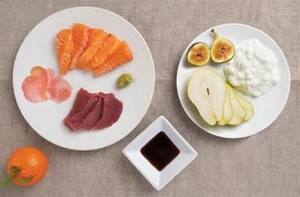
What is?
There are two main principles that determine what you can eat on your fasting day and what foods you should avoid. Your goal is to eat food that will make you feel satisfied while staying within your 500/600 calorie limit.
The best choice in this case would be foods rich in protein , as well as foods with a low glycemic index . There have been several studies showing that those who eat a high protein diet feel fuller longer.
But the problem with a real protein diet is that people quickly get bored and give up. Therefore, the Fast Diet does not recommend completely boycotting carbohydrates and constantly adhering to a protein diet. However, on a fasting day, a combination of protein and foods with a low glycemic index will become a powerful weapon against hunger for you.
500 calorie diet for weight loss: benefits
The main benefit of the 500 calorie diet is that it helps in rapid weight loss. Following a VLCD can help refresh your metabolism. It accelerates fat oxidation, helping you lose weight. This is great for those who need to lose weight to prevent any health risks.
But what if you're on this diet even if you don't need to? Or what if you are on a 500-calorie diet for three weeks or more without a doctor's supervision? Here's what can happen.
How many calories do you need to burn per day to lose weight?
The fight against extra centimeters is not easy; to win you will need a lot of strength and will. And only those who went straight to achieving their dreams will be able to achieve a positive result.
Often, if a woman was overweight, she justified it not with her weak will, but with some kind of health problems, genetic predisposition, rampant hormones - whatever. After all, sometimes it is difficult to admit that the culprit is simple laziness.
So how many calories do you need to burn to get rid of 1 kg of fat?
How many calories do you need to burn per day to lose 1 kg of fat?
It is believed that to burn 1 kg of fat you need to spend 7700 kcal. Nutritionists advise losing weight by 2-4 kg per month (due to fat). Accordingly, in order to safely lose 0.5 kg of fat per week for the body (keep in mind that the plumb line will be slightly larger due to lost water, muscles, etc.), you need to create a calorie deficit of 3850 kcal per week, which is 550 kcal per day (3850:7).
This is exactly the calorie deficit that needs to be created in order to remove 2 kg of fat per month.
You cannot lose weight by cutting down your diet alone. You must eat properly and balanced. Therefore, it is necessary to achieve a calorie deficit in a comprehensive manner: by reducing calorie intake and by increasing physical activity. With an active lifestyle, your metabolism speeds up and your body burns calories faster during everyday activities.
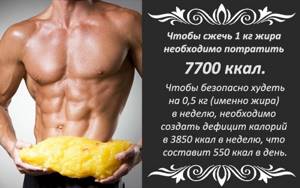
All this is possible if you go through all the steps presented below.
Formulating a goal
The main thing you need is to formulate a goal. To start, make a list of what losing weight will bring you. For example, it could be a dress, a variety of outfits, dates with handsome men, a healthy body. Also make a list of the reasons that could prevent you from achieving this goal.
These points include softness, weakness of will, and lack of character. If you keep these two lists in front of you constantly and compare the obstacles and possible results, you will undoubtedly overcome all obstacles.

Psychological attitude towards losing weight
Once you realize your weaknesses, you will understand what to do next. The more specific you are about your obstacles, the more likely you are to overcome them. For example, weak will. There is no such thing as a weak will “in principle,” but it can be weak in relation to something. For example, for sweets or training. Which exit? Strengthen it by developing new habits. Make a promise to yourself to give up sugar and confectionery for a week or do the minimum possible workout. Keep your promise and you'll feel completely different at the end of the week. Work according to this principle with all your weaknesses.

Calculation of safe minimum calories
Let's not forget that calories are simply necessary to maintain the vital functions of our body, namely: for the functioning of the cardiovascular system, for the respiratory, endocrine, excretory, etc. And in complete rest, our body burns calories. Now let's talk about the safe minimum calories per day.
500 Calorie Diet for Weight Loss: Foods to Avoid
- Processed foods such as sausages and salami.
- Canned vegetables, fruits, etc.
- Energy drinks, carbonated drinks and bottled fruit juices.
- Dried fruits.
- Sweet foods such as cake, pastries, pancakes and candies.
Conclusion
The 500 calorie diet for weight loss is not for everyone. You should follow it only under the supervision of a doctor and nutritionist. While following a VLCD may help reduce weight temporarily (if followed for a short time), it may lead to health risks in the long term. Hence, practice portion control and maintain a healthy lifestyle to lose weight gradually.
500 calorie diet
An ordinary person consumes 2000-4000 kilocalories in a comfortable mode.
To a large extent it depends on body weight. A woman weighing 55 kilograms can feel comfortable on 2000 kilocalories, but a tall man weighing 110 kilograms is only saturated on 4000 kilocalories.
If a person decides to lose weight on Monday and start a 500-kilocalorie diet, then within three days this can turn into unbearable hunger pangs. Therefore, very few people can sustain a 500 kilocalorie diet for more than 3 days.
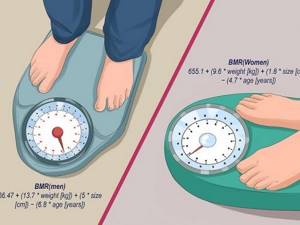
What is the 500 calorie diet for weight loss?
The 500 calorie diet is an extreme form of the very low calorie diet, meaning it is extremely low in calories. It replaces your regular diet with liquid supplements that replace meals with shakes and drinks over a period of time.
This limited calorie intake will help your body utilize its stored fuel source i.e. fat. This, in turn, will help you lose extra pounds.
This is a type of 5:2 intermittent fasting plan that involves severely restricting energy on two non-consecutive days of the week and consuming 2,000 calories on the other five days. This type of modified diet can meet 20-25% of energy needs on fasting days.
Research has shown that hypocaloric intermittent fasting can help overweight and obese people lose weight. However, these studies are not conclusive and more research is needed to confirm these findings.
What should your 500 calorie diet plan look like? Scroll down to find out.
How to burn 500 calories?
On average, a person with a heart rate of 140 beats per minute burns about 10 kilocalories per kilogram of body weight per hour.
For example, if I weigh 75 kilograms, my body will burn 750 kilocalories in an hour of aerobic exercise. And the consumption of 500 kilocalories will occur in 40 minutes.
Lighter people will need a little more time, and heavier people a little less.

Menu. What to eat for 500 calories?
Nutrition should not only be high in calories, but also balanced - balanced in proteins, fats and carbohydrates.
25% of calories should come from protein, 25% from fat and 50% from carbohydrates.
Out of 500 kilocalories, you need to consume 125 calories from proteins, 125 from fats and 250 from carbohydrates.
125 kilocalories of protein is approximately 30 grams of protein.
125 calories of fat is approximately 13 grams of fat.
250 kilocalories of carbohydrates is approximately 62 grams.
This composition of proteins, fats and carbohydrates cannot be obtained with a chocolate bar, but can be obtained from 150 grams of lean meat and 100 grams of cereal.




